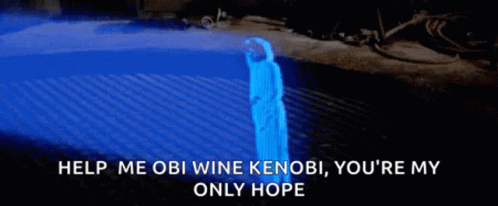[Leadership laws] The law of hope with teeth
Remember the critical human job that we do before all the heady "official" innovation work.
![[Leadership laws] The law of hope with teeth](/content/images/size/w1200/2024/05/Law---Hope-with-Teeth---5-to-1-ratio.png)
The Innovation Law of Hope With Teeth
Innovators’ first job is to offer agency, dignity, and dogged determination, because clients often call us in when they are in trouble, even panicked.
Quick description
The wider world peeks in on innovation
I encountered this law via a thoughtful and very serious interview about the news, its impact on people's faith in the future, how more and more Americans are avoiding the news, and what can be done about it.
Good show. Recommend it.
I especially perked up when one interviewee, David Bornstein, who co-founded the Solutions Journalism Network to help with this problem mentioned this term: "Hope With Teeth." (So thanks and credit to David and the SJN team for coming up with this great tool!)
"[W]e use the phrase 'hope with teeth' when we want to talk to journalists about [hope]. Because, ... historically journalists are sort of averse to the idea. 'Our job is not to give people hope. The world is a hard place, and we just tell the story as it is.' That's the sort of thing, 'this is not my job' kind of thing. ... [We show them that] the opposite is that you will give people a sense of something that is meaningful to them and a reason to actually participate in society."
It instantly spoke to me in its truth and its practicality.
The concept stayed with me.
Eventually, I saw it reflected in clients' eyes and voices, when they brought up new projects. Not always. Some projects were just practical next steps. But sometimes, there was outright desperation. They were in a real pickle. They had tried everything else. Coming to us sometimes meant that we were their last hope.

I had never acknowledged it before, I don't think.
It's easy to focus on the impact, the opportunity, executives' bluster in covering up panic, and more. But often, you're simply talking to a human who's panicking. And you can help them out first by actually acknowledging their stress:
"You're not crazy or incompetent. This is hard, despite your great team. But it'll be ok. We got this, together. I promise."
The idea of "hope with teeth" was not enough
Bornstein and co-interviewee Amanda Ripley, author of the book High Conflict: Why We Get Trapped and How We Get Out packaged this concept in three simple terms:
- Hope
- Agency
- Dignity
But at least I didn't see them define "hope" itself anywhere.
That's where the mash-up with Jane Goodall's definition of hope made natural sense. In The Book of Hope: A Survival Guide for Trying Times, she wrestles with her hope for the world and how to define it:
“Hope and faith are very different, aren’t they [?] ... Hope is more humble than faith, since no one can know the future. ...
You won’t be active unless you hope that your action is going to do some good. So you need hope to get you going, but then by taking action, you generate more hope. It’s a circular thing. ...
It is a human survival trait and without it we perish. ...
Optimism says 'everything will be fine' and pessimism says 'nothing will work out.' Hope, on the other hand, has no certainties. 'It is the dogged determination to do what is in our power to make the better future we wish for actually happen.'”
– Jane Goodall
That "dogged determination to act, even if there is no faith that it'll succeed yet" was the missing, practical definition of hope that I needed.
Putting it all together then, you can consider "hope with teeth" to include:
👏 Dignity - To value action
🧗 Doggedness - To act even before believing it can work
This is what innovation leaders must offer clients first, before anything else can resonate.
How to apply the law
The "how" of it is heavy on interpersonal communication, human psychology, change leadership, and more.
But really, you can also get started very simply, without digging into all those disciplines.
Just ask yourself whether you did or how you might do these three things in conversation:
🎮 Agency
How might I help clients feel like they and I can actually do something about their problem, rather than being kept locked up behind corporate rules or external realities?
👏 Dignity
How might I help clients and their teams feel like they matter? How might I make them believe that their work to-date, their expertise, and their participation in this effort have value – value both in the "productive," intellectual sense and in the "human," deeply personal sense?
🧗 Doggedness
What evidence from the past and credible assurances about the future might I offer to help clients believe that you won't give up (and won't be forced to give up) until you succeed for them, in time for when they need it?
Easier said than done. Sure. But a start is just to acknowledge it and then to revisit it over time.
Good luck in your work of giving people hope ... with teeth!
Further reading
Chakrabarti, M., & Scheimer, D. (2023). Rebroadcast: Americans are avoiding the news. What can journalists do? On Point. https://www.wbur.org/onpoint/2023/07/03/rebroadcast-americans-are-avoiding-the-news-what-can-journalists-do
Goodall, J., & Abrams, D. (2021). The Book of Hope: A Survival Guide for Trying Times. Global Icons. https://shop.janegoodall.org/product/the-book-of-hope/jgi307
Ripley, A. (2021). High Conflict: Why We Get Trapped and How We Get Out. Simon and Schuster. https://www.amandaripley.com/high-conflict
Solutions Journalism Network (SJN)
Ugartemendia, M. M. Jane Goodall’s 4 Reasons for Hope in These Times. https://efectocolibri.com/en/jane-goodalls-4-reasons-for-hope-in-these-times/




